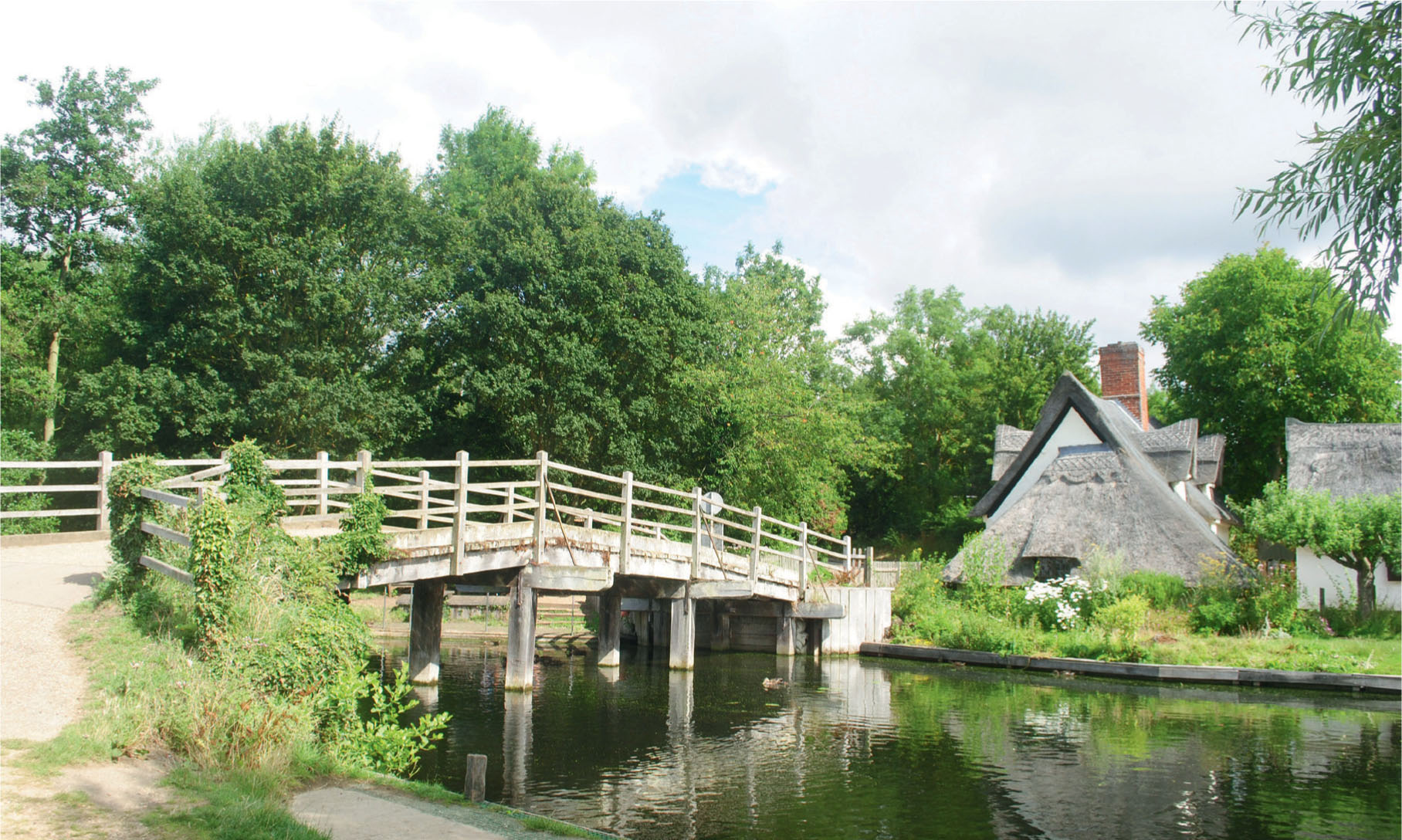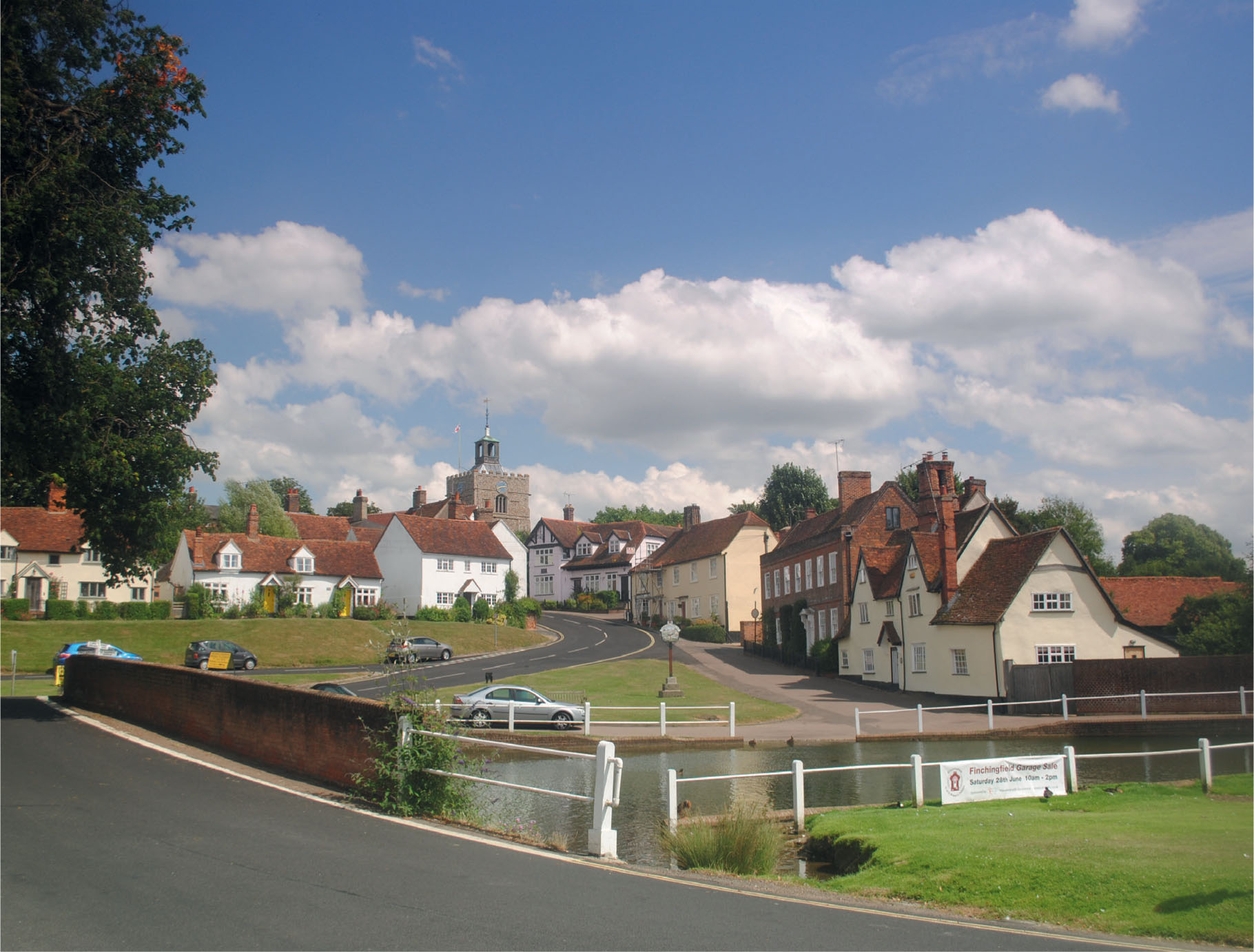Flatford Mill on the River Stour, a typical English rural scene.
After the publication of my Making Rural Buildings for Model Railways (Crowood Press), another book on a similar subject seemed a good idea. This time, rather than concentrating solely on buildings, I will be looking to extend the content to cover more of the rural scene.
In the following chapters I have tried to cover most of the facets that make up our rural landscape. The book is presented in a way that takes the reader on a journey through this landscape, stopping off from time to time to take a closer look. It will be here that I will examine just how we might create a miniature version of what we see.
This will be taken a stage further by projects and case studies inspired by a prototype to recreate a convincing replica in model form. These will cover buildings, structures, infrastructure and parts of the natural landscape. The last chapter has been purposely devoted to creating a total model diorama, using as its inspiration a famous landscape painting by John Constable.
Our journey will start by looking around the village, examining various buildings that relate to the community and village life. In most cases the village is centred on the church. We will also look at the other buildings that make up the rural village, as well as some of the regular features and traditions to be found. A select few will then be chosen to recreate in model form.
From the village our journey extends out along the country lanes to look at aspects of farming and other country industries. I will pay particular attention to rivers, streams and other watercourses, and how man has made crossings over them. All of these combine to create the country landscape we all love. By the medium of model-making I will show how some of these features can be captured in a miniature three-dimensional form.
I have included a special chapter to look at the ruin within the landscape. This particular feature makes an interesting modelling subject to add to model railways or even some types of war gaming dioramas. Ruined buildings have a special rustic appeal, and when modelling them we can combine man-made masonry with vegetation as nature begins to take over again. In the past certain rich landowners showed their special fascination for ruins by replicating them within their grounds. These follies, specially created to improve or add to the natural landscape, served as a focus and talking point.
The book concentrates on the period between the end of the nineteenth century and the start of the Second World War, which would see the heyday of the railways and the end of traditional farming methods using the horse. After the Second World War this all changed as mechanization took over completely and the rural landscape was altered dramatically. As a benchmark I have taken inspiration from the Vale Scene at Pendon Museum, which I consider the miniature rural landscape modelled to perfection. I would fully recommend a visit and am sure you will not be disappointed. Like myself, you may come away totally inspired.
Approaches to model making can differ immensely depending on how far you are willing to go and what you wish to achieve from the hobby. For some, it will just be having fun by dabbling and being creative. For others, it will be about reproducing an actual location with correct historical accuracy. In this case prototypical detail will be the order of the day and these modellers will not be satisfied until every last detail has been addressed.

Nearby on the River Stour is Bridge Cottage, another idyllic rural scene.

The village green and duck pond at Finchingfield is possibly the best-known view in Essex.
My own approach to model making, I suppose, lies somewhere in between. I see the hobby very much as a three-dimensional art form. This is especially evident when it comes to modelling the landscape, buildings and the scenic finishes.
An examination of work by the great landscape artists from the past will demonstrate that most of the detail is suggested rather than painstakingly executed. Works of art are generally viewed from a reasonable distance, and when standing away from the work the detail appears to be all there.
If you think about it, the same applies to any model as we will always view it at a certain distance. Detail will not be so obvious because everything is scaled right down, unless we choose to scrutinize the model with a magnifying glass to make sure every last detail has been included. A number of model makers will argue that this is the only correct way to approach the hobby, but I would recommend that they try learning from the great masters, instead of rivet counting!
Just as with a painting, a model can be easily overworked. Leaving out some detail will not detract, so long as the proportions are observed. If it looks right, then it will be right. The painting and finish is always going to be an important factor in how accurate our models are going to appear.
To conclude, the aim of this book is firstly to present a good selection of reference material and secondly to provide practical solutions on how to model the rural scene. Using the techniques presented, it is to be hoped you will be able to add them successfully to your model railway or create a convincing rural-themed diorama. Before we look at creating any models, however, it is worth considering the historical background and examining how the rural landscape has developed through the years. I can’t stress too firmly that you should always take the opportunity to learn as much as possible about the subject before any modelling is attempted.
An elevated view of the lanes around Pendon Parva village on Pendon Museum’s Vale of White Horse scene. This is rural scenic modelling to perfection and is inspirational in every sense. ANDY YORK BRM
The book will also cover the subject of colour and how we can use paint to recreate convincing models. Colour will always be an important subject for any modeller, although a good number of modellers don’t seem to give it the attention it surely deserves. For those modellers who perhaps are not so confident in this area of the hobby, I will try to explain how to select and then mix paint to achieve realistic results. The painting and finish applied to any model will be the first thing the viewer notices. For this reason it is very important that the prototype’s colour is observed and then replicated as closely as possible. If you are serious about creating any rural scene in miniature form you should always take your time at this final stage.